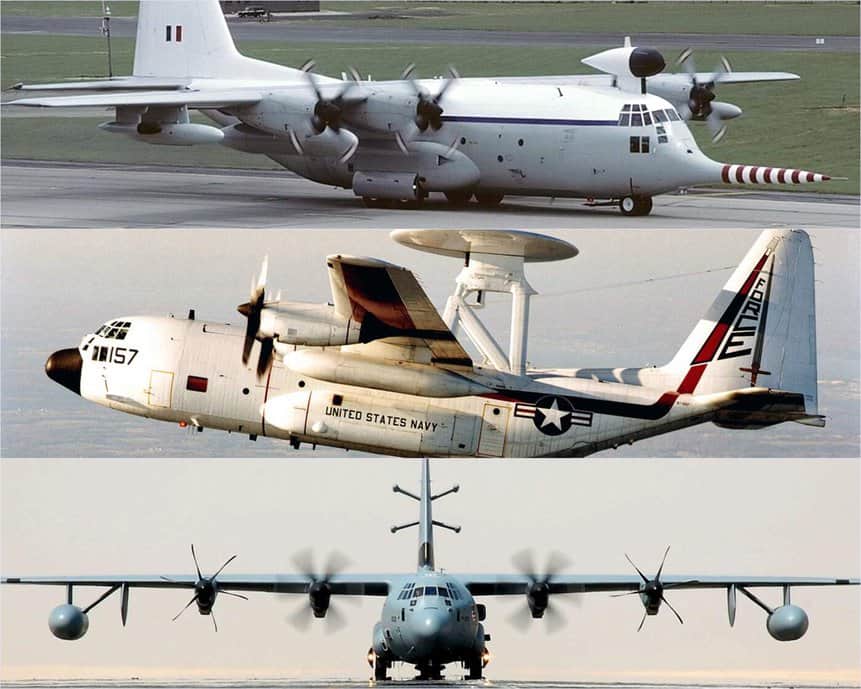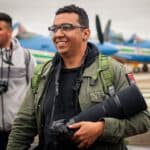Among all modern military aircraft, the Lockheed C-130 Hercules is certainly one of the most famous, being present in 74 countries in different variants, including Brazil. About 3000 units have already been manufactured and the model is still in production.
Despite its age (the first C-130 made its first flight in 1954), the Hercules remains competitive in the world market even with the presence of much more recently designed models, such as Embraer's KC-390 Millennium, developed just to replace it.
The C-130 was developed as a freighter turboprop, but has been adapted for numerous missions throughout its 66 years of service. In this article, we are going to get to know five of these curious adaptations of the venerable Hercules.
C-130K W.2 XV208 Snoopy
We start our list with what is certainly one of the weirdest Hercules of all time. This is a C-130K manufactured for the British Royal Air Force (RAF), being delivered in September 1967 with registration number XV208 as Hercules C.1.
A few years after delivery, the XV208 was modified to carry out meteorological reconnaissance missions with the RAF's Meteorological Research Wing (MRF). For this, the aircraft received new instrumentation, the most notable being a huge striped probe on the nose, used to capture atmospheric samples.
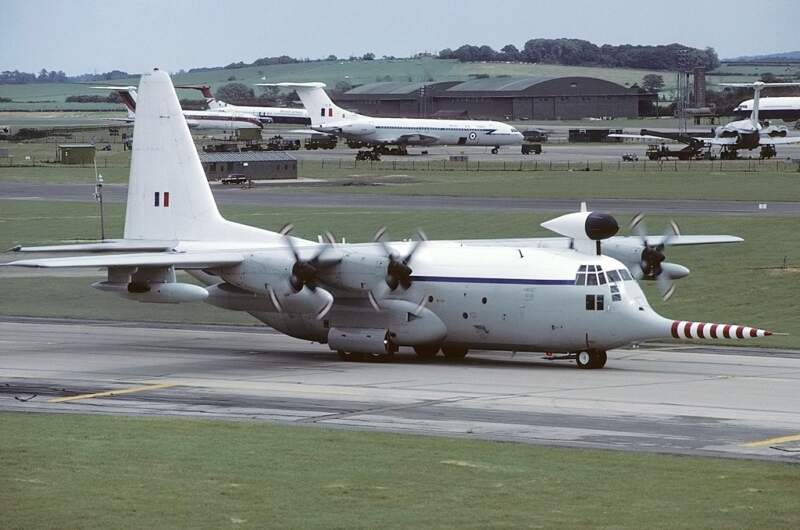
The original radar has been moved to the top of the cockpit, making the plane look even weirder. On the wingtips, more antennas were installed and the aircraft was redesignated as the Hercules W.2, but kept its registration.
The XV208's massive nose earned the nickname Snoopy, and so it flew the MRF from 1973 until its first retirement in 2001, logging some 11,800 flight hours over 28 years. The aircraft was stored at the Boscombe Down test base in south east England, still in its beautiful grey, blue and white livery.
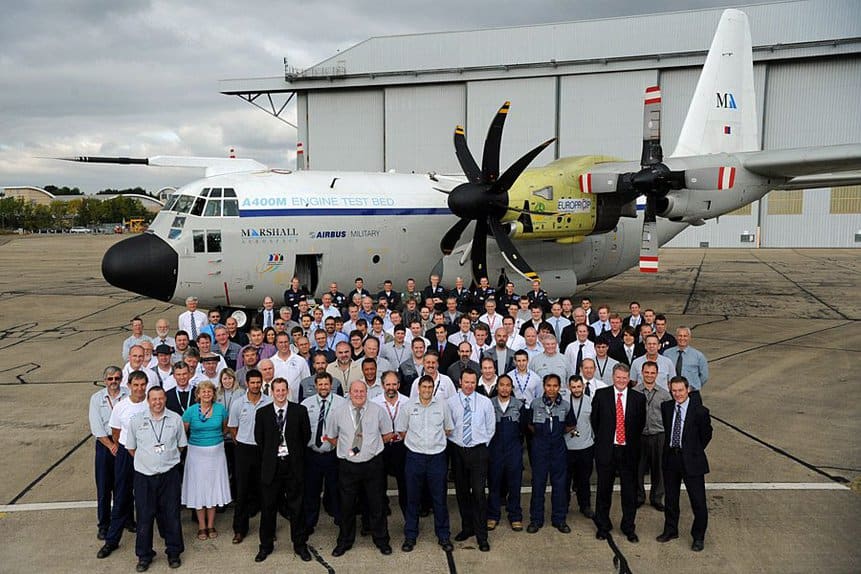
In 2005 it was withdrawn from Boscombe Down and reconfigured by Marshall Aerospace to be used as a test bed for the Europrop TP400-D6 engine used in the Airbus A400M. In 2015 Snoopy reached the end of his life, being scrapped in Cambridge.
EC-130 Commando Solo
Among the numerous variants of the Hercules in service in the US, one of them has a very delicate and sensitive mission: psychological operations. For this, the Air National Guard (ANG), a reserve arm of the US Air Force (USAF), operates the EC-130J Commando Solo II.
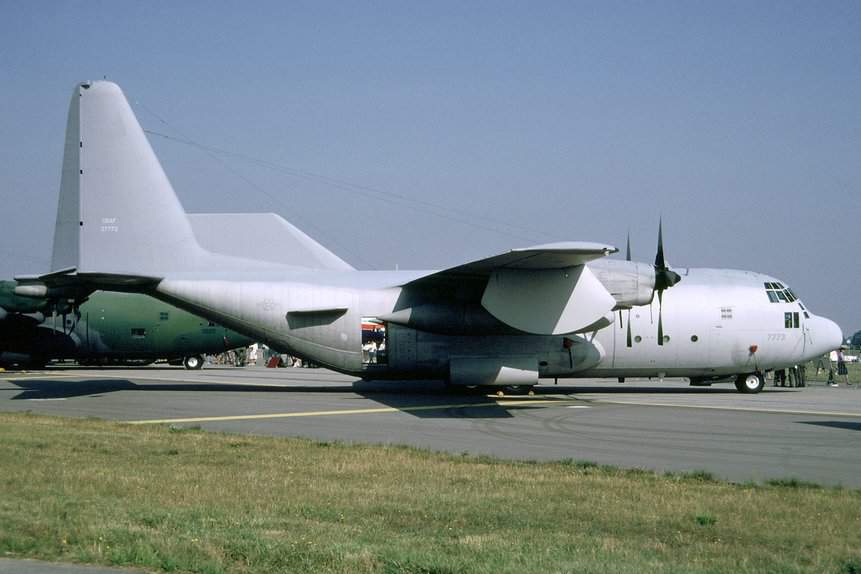
According to the Ministry of Defense definition, “Psychological Operations are technical-specialized procedures, systematically operationalized to support the achievement of political and/or military objectives and developed before, during and after the use of the Force, aiming to motivate friendly, neutral and hostile target audiences to achieve behaviors desirable.”
That said, we're back in the 1970s with the introduction of the EC-130E Coronet Solo, a heavily modified C-130E for transmitting radio and television signals during mass influence and control operations.
The aircraft participated in missions in Libya, Haiti, Iraq and the Invasion of Grenada, transmitting signals to radio and TV stations, guiding the populations, and even to enemy radios, urging them to surrender.
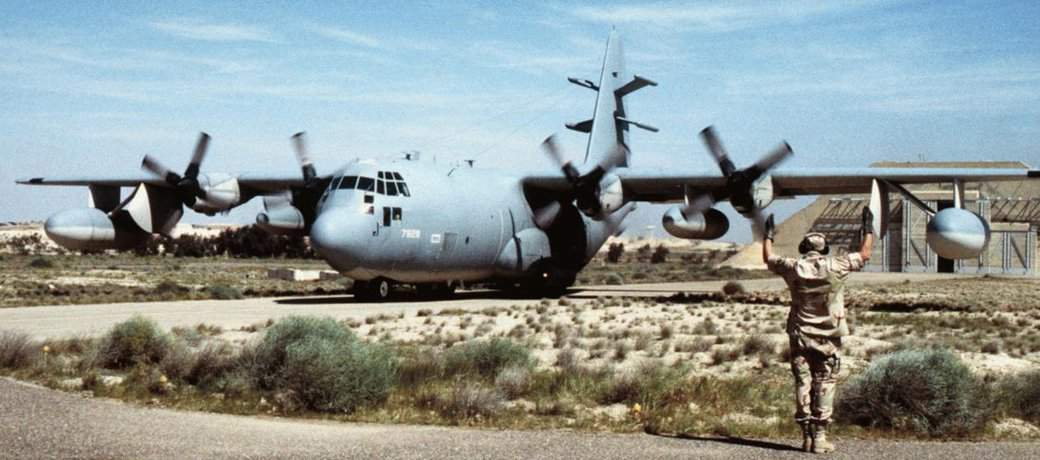
Over the years, the EC-130E's mission has remained the same, but the plane has undergone modifications until it reached its most famous and characteristic configuration, with two huge antennas at the tips of each wing (one vertical and the other in the form of a pod), as well as as a set of X-shaped antennas, mounted on the vertical stabilizer. The aircraft performs the vast majority of its special missions at night to reduce detection risks.
The EC-130E has been retired, but the US continues to operate the EC-130J Commando Solo II, based on the more modern C-130J Super Hercules. Its secret equipment suite was modernized and now the EC-130J is capable of modifying transmission formats in AM and FM bands, VHF and UHF frequencies and television and mobile telephony.
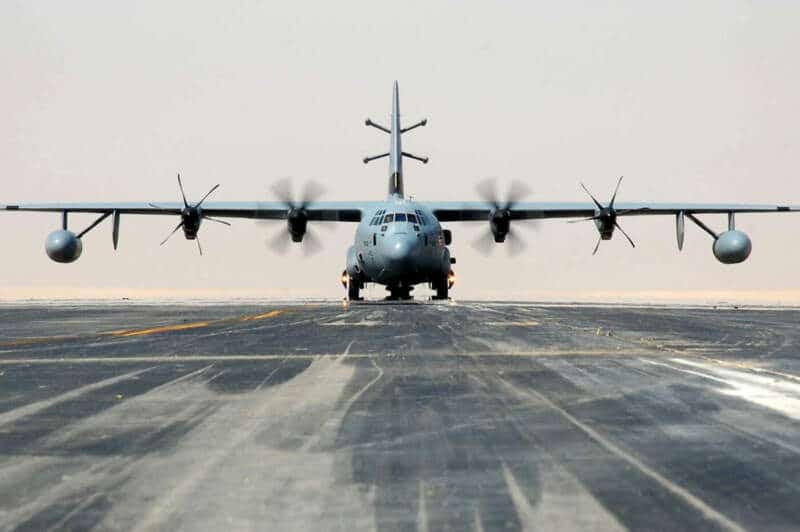
The US operates three EC-130Js through the 193rd Special Operations Wing, which has the "infamous" motto “Never seen, always heard.”
JC-130 – Capturing the Stars
In the late 1950s, then President Eisenhower announced that the US would use its satellites for photographic reconnaissance (espionage) missions. With that, the challenge arose: how to recover photographic films from space?
The problem was partially solved with the satellites being prepared to launch the photographic film in special “buckets”, which descended into the Earth's atmosphere and were then decelerated with a parachute.
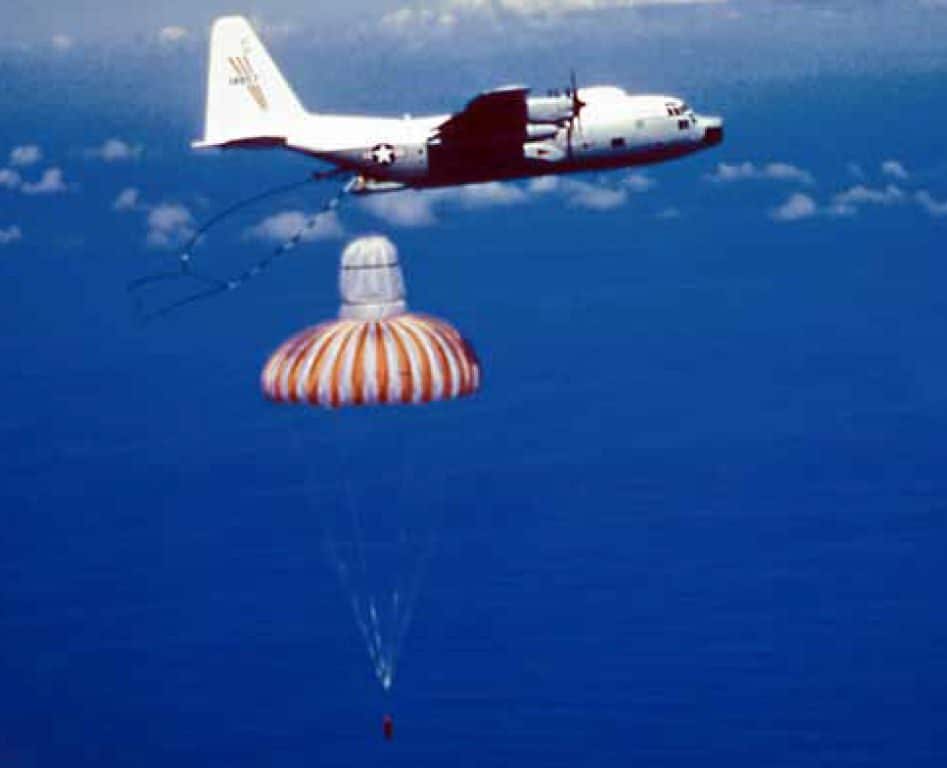
The complete solution was in the air force. A C-119 cargo aircraft was modified with a winch system to fish the parachute out of the air and take the bucket with the photos to a base.
It didn't take long for the C-119 to give way to the C-130 Hercules. The first C-130Bs modified for the mission were designated the JC-130B and were operated by the 6593rd and 6594th Test Squadrons out of Hickam Air Force Base, Hawaii. Its members were proud of the dangerous and delicate missions, so much so that they nicknamed themselves “Star Catchers”.
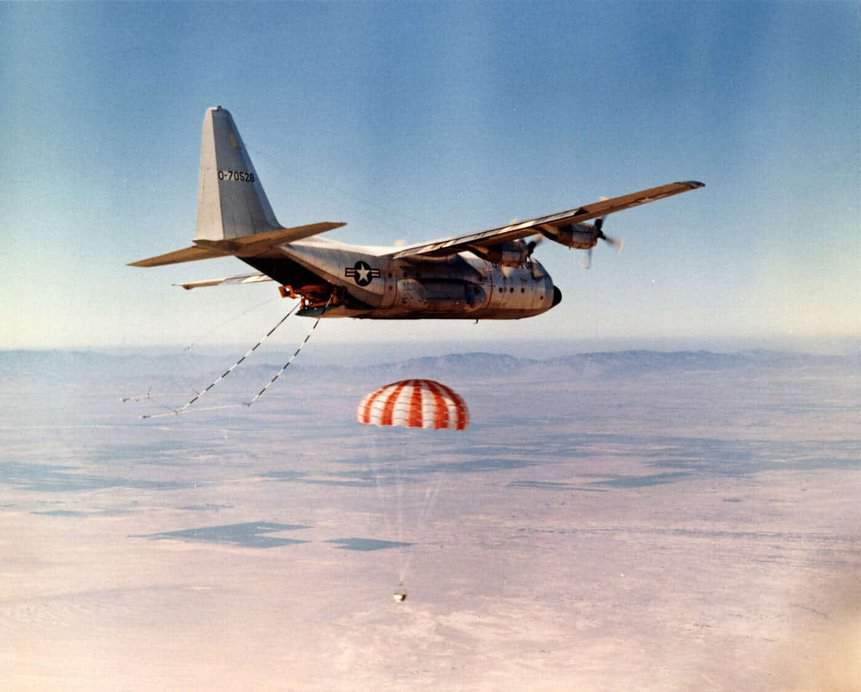
The retrieval equipment consisted of two 10-meter aluminum spears that extended and stretched a series of 1,10-cm-thick nylon or steel loops and four-prong hooks. The pilot maneuvered the aircraft to fly about 2 meters above the bucket's parachute, the ideal height for it to be fished out of the air.
The moment it was captured, a cable would extend and then be retracted into the interior of the plane. The whole operation involved not only the “fisher plane”, but four other JC-130s, four rescue helicopters and two refueling planes.
Between 1963 and 1986, the squadron captured and recovered nearly 170 buckets of photographic film depicting the Soviet Union, China, North Korea, Southeast Asia and the Middle East.
YMC-130H Credible Sport
In 1979, the Islamic Revolution took place in Iran, which gave rise to the crisis of the 52 American hostages who were trapped in the US embassy in Tehran. In April 1980 the US conducted the ill-fated Operation Eagle Claw, which ended with eight dead, two aircraft destroyed and five helicopters captured in Iran.
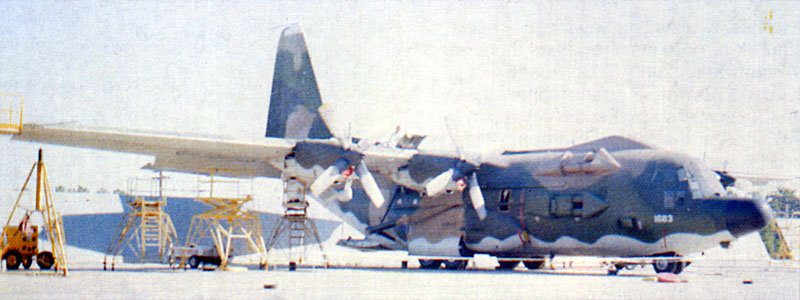
Following the humiliating failed mission, the US launched Operation Credible Sport. The idea was to modify a C-130 so that the aircraft would be able to land and take off from inside the Amjadiyeh stadium, take off with 150 passengers (hostages + rescue team) and land on an aircraft carrier (!!!)
In fact, the C-130 had already operated from an aircraft carrier before, but landing and taking off from a stadium was a completely unheard of idea. And so the Government proceeded with the operation.
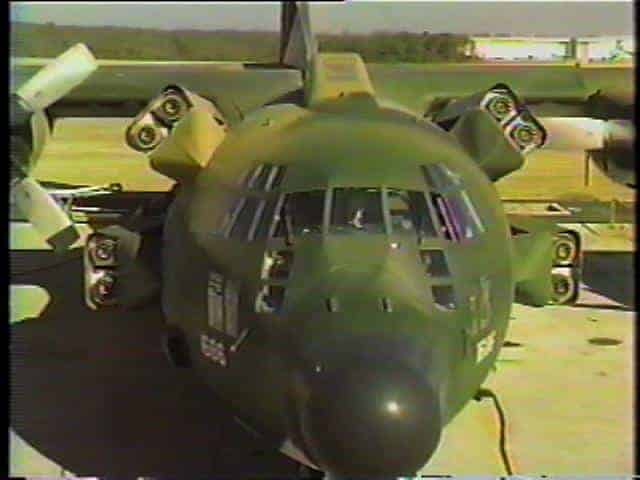
Three C-130Hs (74–1683, 74-2065 and 74–1686) were used in the trials. The planes were extremely modified, receiving a set of thirty rockets installed and developed by the Navy.
Eight forward-facing RUR-5 ASROC rockets were installed just behind the cockpit, in the lower and upper portions of the fuselage, to brake the aircraft on the ground; Eight Shrike rockets were installed on the sides above the landing gear in order to slow the descent speed on landing; eight rear-facing Mk.56 rockets from the RIM-66 anti-aircraft missile were installed in the aft fuselage to aid takeoff; two more pairs of Shrikes were installed on the wings to correct the yaw effect during takeoff and another two ASROC were installed on the tail facing downwards to avoid a tailstrike.
In addition to rocket sets, Hercules received ventral and dorsal fins, FLIR antenna, new radome with ground-following radar, countermeasures for radar and heat-guided missiles, larger ailerons, new flaps, doppler/GPS/INS navigation system and a stop hook for landing on the aircraft carrier.
Tests went well until an accident on October 29, 1980. After a series of successful takeoff tests, a failure in the rocket firing sequence caused the plane to lose lift and collide violently with the ground, causing the right wing to break and catch fire. Despite the seriousness of the event, everyone came out well.
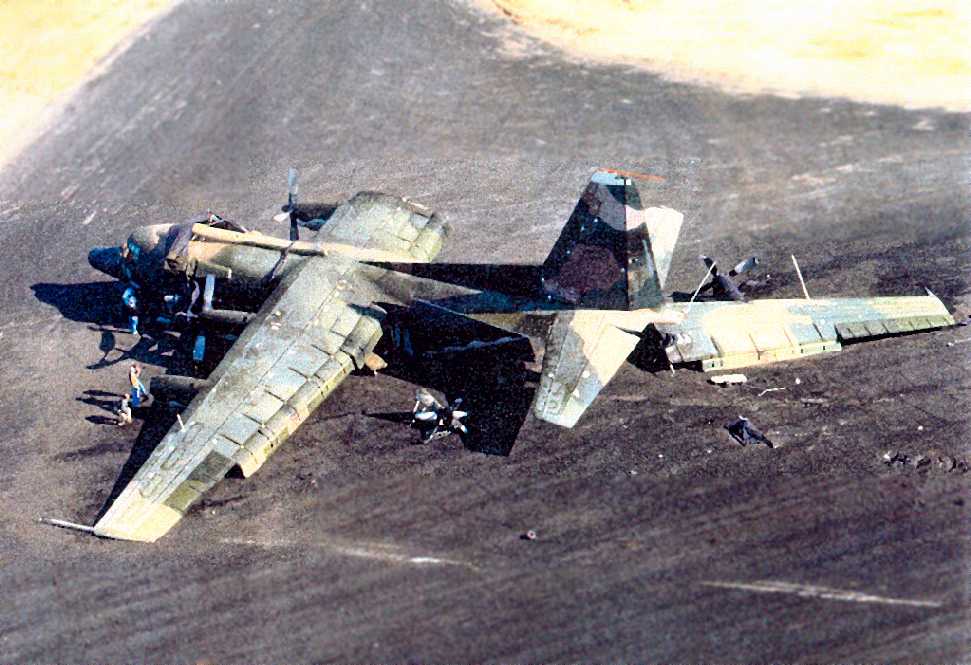
As an aircraft of a secret design, the YMC-130H 74–1683 was discarded and buried in the test base itself. The rescue project was canceled after a resolution in the crisis, but one of the prototypes was still used in the Credible Sport II project, which gave rise to the MC-130H Combat Talon II. The C-130H 74-2065 remains in service, while the 74-1686 has been preserved.
https://www.facebook.com/EmpireStateAerosciencesMuseum/photos/the-c-130-74-1686-in-warner-robbins-georgia-photo-courtesy-of-craig-landefeld-we/1966115453423044/?_rdr
EC-130V “airplane-radar”
In 1986 the US Coast Guard (USCG) acquired eight Grumman E-2C Hawkeye early warning and control (AEW&C, also called 'radar planes') aircraft to detect aircraft transporting between the Caribbean and the US.
However, the E-2C did not meet the autonomy and range requirements that the USCG needed. Thus, the E-2s were returned in 1992 and in the same year the USCG received a proposal from General Dynamics to modify one of its search and rescue HC-130s with the same systems as the E-2C.
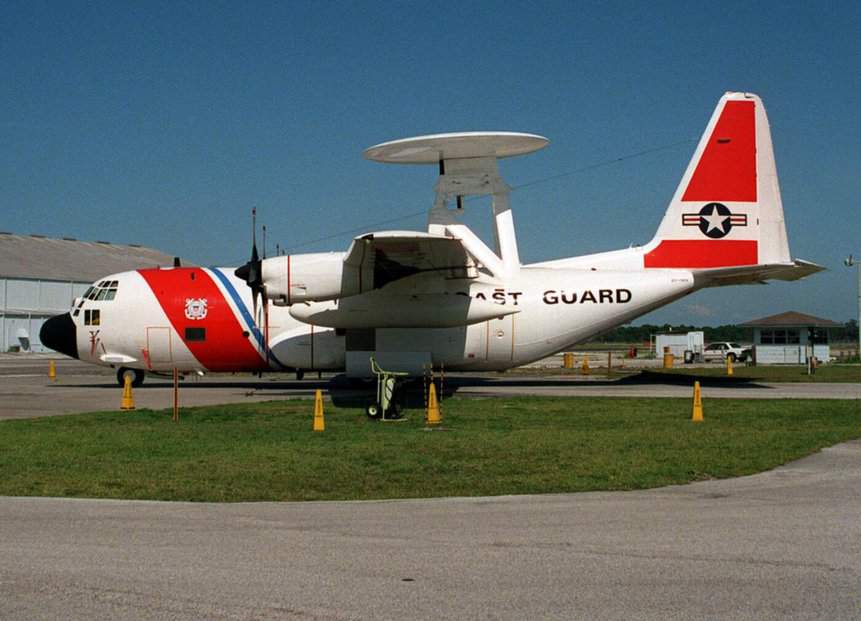
Designated EC-130V, the Hercules was fitted with the AN/APS-145 surveillance radar by mounting on a rotating platform. The mission and crew rest stations were mounted on a pallet that was easily installed in the C-130 cargo bay.
Tests with EC-130V USCG 1721 were satisfactory. In addition to airspace surveillance, the Hercules would be used for search and rescue missions, maritime patrol, fisheries control, exclusive economic zone control missions, and even mission support with the Space Shuttle.
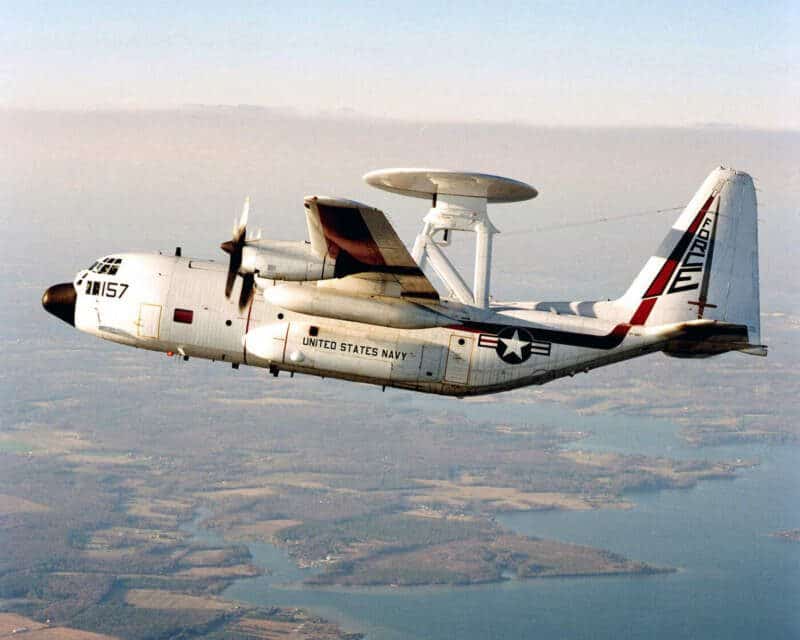
However, budget cuts forced the Coast Guard to abandon the project. The aircraft was transferred to the Air Force, where it received registration 87-0157 and designated as NC-130H, being used for test flights.
Subsequently, the NC-130H was sent to the Navy, which reinstalled the APS-145 radar for upgrade tests on the E-2C. After the evaluations were completed, the Hércules flying radar returned to the Coast Guard with its designation HC-130H, which operated it until 2014.
This time, the Hércules was donated to the US Forest Service, receiving civil registration N118Z and becoming a forest firefighting aircraft, equipped with the MAFFS II system. The C-130 was transferred one last time to the California Department of Forestry and Fire Protection – Cal Fire, where it continues to serve as a firefighter.
Do you want to receive our news firsthand? Click Here and be part of our Group on Whatsapp or Telegram.

